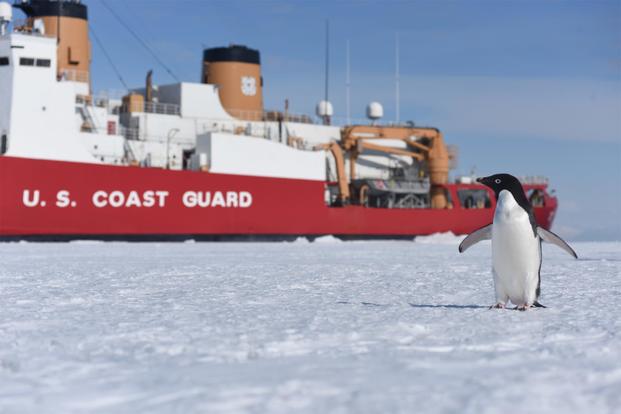If the U.S. is going to do more work in cold weather climates to deter malign activity from Russia and China, one Air Force general says it will need more equipment to operate full-time in the South Pole.
Pacific Air Forces commander Gen. Charles Q. Brown said Tuesday he'd like to see a boost in "some of the capability we have, but don't have a lot of."
"Icebreakers, for example. LC-130s? There's not a lot of those," Brown said during a speech at the Mitchell Institute for Aerospace Studies in Arlington, Virginia.
The Air Force only has 10 Air National Guard LC-130 "Skibird" aircraft, equipped with ski-like landing gear.
If the U.S. military will continue to operate simultaneously in two cold-weather environments, "we may need more," Brown said. "And the same thing with icebreakers."
Related content:
- Deep Freeze: The Air Force's Vital Mission in Antarctica
- As Russia, China Encroach, Airmen Work to Expand Comms Network in Antarctica
- Norway Worries Melting Arctic Ice Will Incite Drone Ops and Conflict
- Seattle Will Be Home Port for New Class of Icebreakers
"Russia has a number of icebreakers, China has an icebreaker ... how do we think about a capability for the Arctic and the Antarctic?" Brown said. Russia and China are working to expand their military footprint in both regions.
The U.S. Coast Guard has just one working heavy-lift icebreaker, the Polar Star, which provides services to Antarctica, and a medium icebreaker, the Healy, which primarily conducts patrols in the Arctic. The service is set to receive the first in a new class of icebreakers by 2024.
Brown said he's been paying close attention to activities in the Arctic Circle. For example, as Arctic ice continues to melt, Russia has emphasized its push for additional undersea intelligence gathering -- from submarines to drone operations -- in the region. Complicating things further, China, which considers itself a "near-Arctic state" is planning to create new shipping lanes with its "Polar Silk Road" initiative.
"The Arctic ... is kind of a precursor to the way I look at the Antarctic," Brown said. "The capabilities that we have in the Arctic are the same capabilities that we probably want to have in the Antarctic. And when I look at the competition, and the melting ice in the Arctic, and the competition with both Russia and China ... we've got to pay attention to that," he said.
Brown said he believes the South Pole "is just a number of years" away from being the same kind of focal point of competition for Russia and China that the Arctic is now.
The U.S. mission to support scientific research falls under the Antarctic Treaty System, first joined in 1961. It supports the National Science Foundation's Polar Program research effort, which calls for military and international partners to travel annually to the South Pole.
While the treaty bans militarization and weapons use on the continent, it allows for the flow of military personnel and equipment into the region. In 1998, an additional measure was added to the treaty, called the "Protocol on Environmental Protection," which stipulates that "any activity relating to mineral resources, other than scientific research, shall be prohibited."
That measure is set to expire in 2048, Brown said. The general hinted there already may be non-sanctioned activity taking place in the region.
On a recent visit to Antarctica, Brown said, there had been an accident in which China's icebreaker hit an iceberg. The icebreaker's crew claimed to be transporting some items belonging to the National Science Foundation.
"Instead of going back to New Zealand to get repaired, it went all the way back to China. Coincidence? Makes me a little suspect," Brown said.
"That's the aspect that we've got to be paying attention to: what is everybody's motive when they come down to Antarctica, particularly when the treaty ends in 2048?" he said.
-- Oriana Pawlyk can be reached at oriana.pawlyk@military.com. Follow her at @oriana0214.












